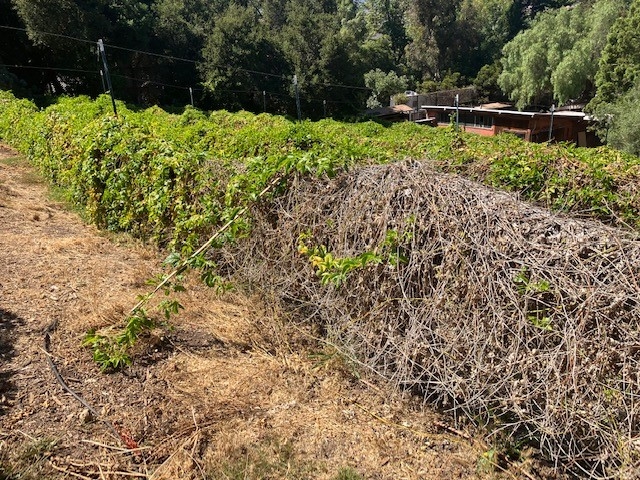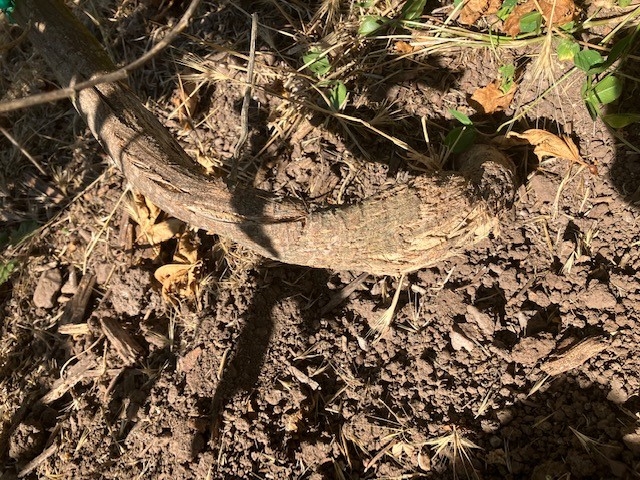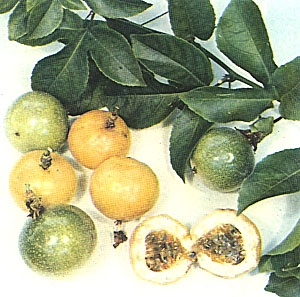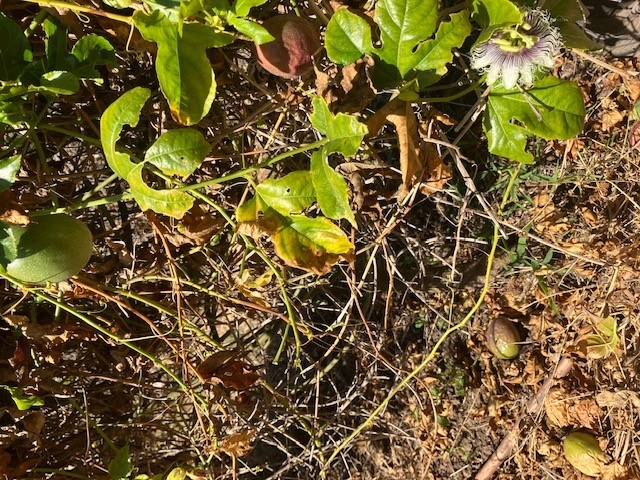Walking a passionfruit vineyard in Carpinteria recently, we saw wilted leaves and total plant collapse.
Passion fruit (Passiflora edulis) belongs to the genus Passiflora, a large genus in the family Passifloraceae consisting of approximately 530 species, many of which are cultivated for edible fruit, pharmaceutical properties, and ornamental characteristics. Passiflora vines can be propagated sexually through seeds or asexually by cutting, air-layering, and grafting. Popular cultivars include purple passion fruit (Passiflora edulis) and yellow passion fruit (Passiflora edulis f. flavicarpa, lilikoi in Hawaii), with the purple passion fruit (‘Fredrick') being the more common type commercially in California.
The fruit can be consumed fresh or processed for juice, flavoring, or value-added products like jams and jellies. The fruit is round or egg-shaped and 2½ to 3 inches long (6.3 to 7.6 cm). The yellow passion fruit is very similar to the purple type except for its skin color, being slightly larger and more acid. The yellow is considered more cold sensitive, although it has been grown successfully in San Francisco Bay Area gardens.
One of the most harmful diseases of passion fruit is fusarium wilt, caused by the fungus Fusarium oxysporum. On young plants, the symptoms include pale-green leaves, mild dieback, leaf drop on lower leaves, and general plant wilting. Yellowing of young leaves appears in adult plants, followed by wilting and death. The disease affects the xylem, causing impermeability of vascular walls and preventing the movement of water to other plant parts. Thus, the vascular tissues become brown at the root, collar, stem, and twig areas. The pathogen can spread by soil movement (machines, implements, shoes, etc.) and by water runoff or irrigation. Injury, such as weed whip and gopher damage are often associated with the disease. Disease severity is greater in high relative humidity and temperature. The plant can die suddenly with a heat wave or strong winds which put a high water demand on the vine. A sunken, dried trunk collar is often seen in diseased plants. Most commercial vineyards can collapse from this disease after five years in the ground.
Shrunken stems characteristic of wilt
Root and crown rot fungal diseases caused by Phytophthora cinnamomi and P. nicotianae are also found in passionfruit. The typical symptoms include chlorosis, wilting, defoliation, and death. Other common symptoms include scorched leaves and aborted flowers. Soil with low drainage, long periods of rainfall, and high temperature increase the incidence of the disease. To prevent the disease, use disease-free plant material. Plant collapse is not common, as in wilt, and lack of roots are characteristic. Phosphorous acid materials should be effective in the treatment.
The yellow varieties are considered more tolerant of wilt



